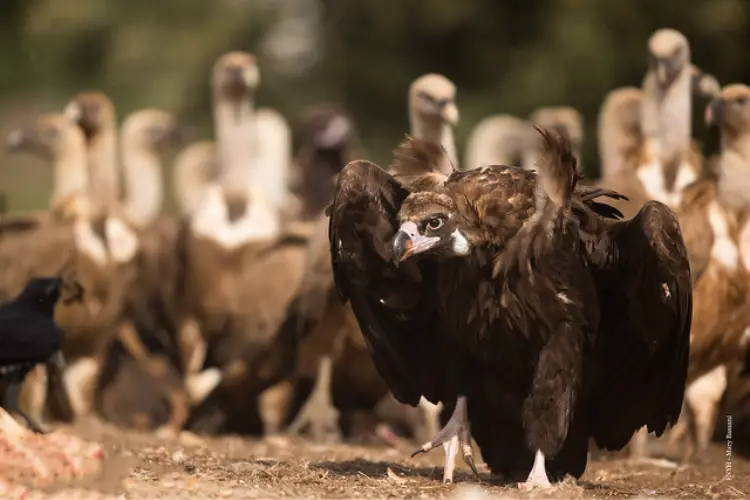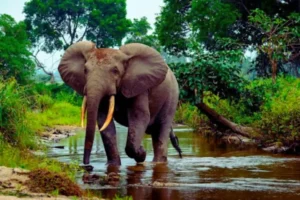
Curious about the collective term for vultures? Delve into the intriguing world of avian nomenclature as we unravel what a group of vultures is called.
From the majestic skies to the vast savannas, the terminology surrounding these scavenging birds holds its own allure. Let’s explore the fascinating dynamics of vulture gatherings and the terminology that defines their collective presence.
Vultures, a gregarious bird found worldwide, are often seen as a collective unit, known as a flock. The term for a group of vultures varies depending on location, but usually refers to a flock.
They are also known as kettles, committees and wakes while flying, resting or feeding in trees.
Do different species of vulture group up together
Different species of vultures tend to group together. For example, black vultures and turkey vultures often roost together in communal roosts, and groups containing hundreds of birds have been recorded.
Additionally, some species, such as the Andean condor, often flock together despite flying alone. Vultures are social birds that often gather in groups, called committees or roosts, and these gatherings can range in size from a few birds to dozens or even hundreds of individuals.
The reasons for these gatherings depend on the vulture species and the location where they are found
Other Names for a Flock of Vultures
A gathering of vultures is called a “wake,” “kettle,” “committee” or, more commonly, a “flock.”
- a cast of vultures
- a colony of vultures
- a congregation of vultures
- a family of vultures
- a flight of vultures
- a looming of vultures
- a meal of vultures
- a pair of vultures
- a rookery of vultures
- a rout of vultures
- a soar of vultures
- a solitary of vultures
- a volume of vultures
- a vortex of vultures
- a volt of vultures
What Do You Call a Group of Vultures Eating?
A group of vultures is called a “wake” or “committee”. When vultures gather to feed on a carcass, they are referred to as “waking”. This term is used to describe the collective presence of vultures as they feed.
Additionally, vultures resting on the ground or in trees while feeding are called “committee”. These terms reflect the various actions and behaviors of vultures as they feed, highlighting their social nature and the importance of group feeding for their survival and well-being.
why is a group of vultures called a wake
The term “wake” is used to describe a group of vultures feeding on a carcass. When the vultures descend to the ground to feed on the carcass, they wake up. This term reflects the collective presence of vultures as they forage.
The name “wake” is a unique and creative way to describe this behavior, highlighting the social nature of vultures and the importance of group feeding for their survival and well-being.
reasons for vultures flocking together
Vultures form groups for various reasons, including feeding, roosting, migration, and mating. Large carcasses attract more vultures, creating a growth cycle called a “wake.” Vultures also gather to roost, seeking protection from predators or elements.
During certain times, flocks head south towards Mexico and Central America, with up to 10,000 birds moving together. Understanding these group behaviors provides insight into their social dynamics and survival benefits.
vultures flocking behavior
Vultures exhibit flocking behavior for a variety of reasons, including feeding, roosting, and migration. When there is a large carcass, vultures gather in large groups to feed on the carcass, with more meat usually attracting more vultures.
This behavior is called “awakening” and it attracts the attention of other vultures, creating a growth cycle. Additionally, vultures group together to seek protection from predators or the elements through numbers.
The roosting vulture is found all over the world, but is particularly uncommon among other birds.
At certain times of the year, flocks of vultures will head south to Mexico and Central America, 10,000 birds moving together. Understanding the factors behind the behavior of vulture groups provides insight into their social dynamics and the benefits these groups have for their survival and well-being.
number of vultures in a flock
The number of vultures in a flock can vary depending on species and location. Vultures usually form groups of less than 100 individuals together, but it is not uncommon to number up to 300.
Larger numbers are usually in winter and when other species join forces. To be considered a flock or group of vultures, there must be at least three to five other birds in the same group. The most common number for most species is 5 to 10 other birds; However, 10 to 20 is also fairly common.
The number of vultures in a flock can also depend on food and water sources
What is a group of baby vultures called?
There is no specific term for a group of baby vultures, and instead, they are referred to as chicks, nestlings, or fledglings, depending on what stage of life they are in.
Vultures are highly gregarious birds found on most continents of the world – except Australia, and most of the time, vultures are seen as a collective unit, so what is the collective noun for a group of vultures?
The term or name for a group of vultures varies depending on where they are, although the generic term is a flock. When they fly in formation, they are referred to as kettles.
When they rest in trees or on the ground, vultures have been known to come and eat.
group of turkey vultures name
A group of turkey vultures is called a “committee,” “kettle” or “wake.” These terms are used to describe the collective presence of turkey vultures, whether they are flying, nesting or foraging.
Turkey vultures are highly specialized scavenging birds known for their keen senses and impressive wings. They are often solitary feeders but gather in groups called nests to stay social and secure.
These readings can consist of dozens of vultures, stuck together on power lines, trees or rooftops, making for an interesting sight.
Understanding the group names of turkey vultures provides insight into their social dynamics and behavior, highlighting their gregarious nature and the various activities they engage in as a collective unit.
group of black vultures name
A group of black vultures that are feeding is called a “wake”. A group of black vultures resting, whether in a tree or on the ground, is called a “committee”.
Finally, a group of flying black vultures or vultures circling is called a “kettle”. Therefore, the collective noun for a group of black vultures is “awake” when feeding, “committee” when resting, and “kettle” when flying.
how do black vultures communicate with each other in a wake
Black vultures communicate through vocalizations and body language, relying on their keen sense of smell to locate meals up to a mile away.
They are highly social birds, outperforming turkey vultures in larger flocks for food sources. They are often seen perched on fence posts in committees of 10-20 at a time, roosting together in family units.
Do Vultures Get Sick From Eating Dead Animals?
Vultures do not get sick by eating dead animals. Vultures have a unique digestive system that allows them to eat decaying meat without getting sick. Vultures have bacteria on their skin, mouth, and gut that are heavy duty and can thoroughly break down carcass flesh. Their gut bacteria are flesh-eating and highly toxic, helping them digest meat and extract nutrients from it. Additionally, vultures have a strong immune system and stomach acid that can destroy most of the dangerous bacteria they ingest.
Therefore, vultures are not affected by the toxic chemicals released during the decomposition process of dead animals.
vulture conservation
Vulture conservation is crucial due to threats like habitat loss, poisoning, and persecution. Key aspects include habitat protection, preventing poisoning, promoting sustainable development, raising public awareness, conducting continuous research, and using captive breeding and reintroduction programs.
These efforts aim to protect vulture populations, reduce persecution, and promote coexistence between humans and vultures.
Raising public awareness, conducting research, and implementing captive breeding and reintroduction programs can help ensure the long-term survival of these important birds.
conclusion : what is a group of vultures called
the collective term for a group of vultures is as intriguing as the birds themselves. Whether referred to as a “wake,” “kettle,” “committee,” or simply a “flock,” these names reflect the unique characteristics and behaviors of these majestic birds.
Understanding what a group of vultures is called not only adds to our knowledge of avian terminology but also offers insight into the social dynamics and ecological roles of these fascinating creatures.
As we continue to explore the wonders of the natural world, the terminology surrounding vulture gatherings remains a testament to the diversity and complexity of life on Earth.

